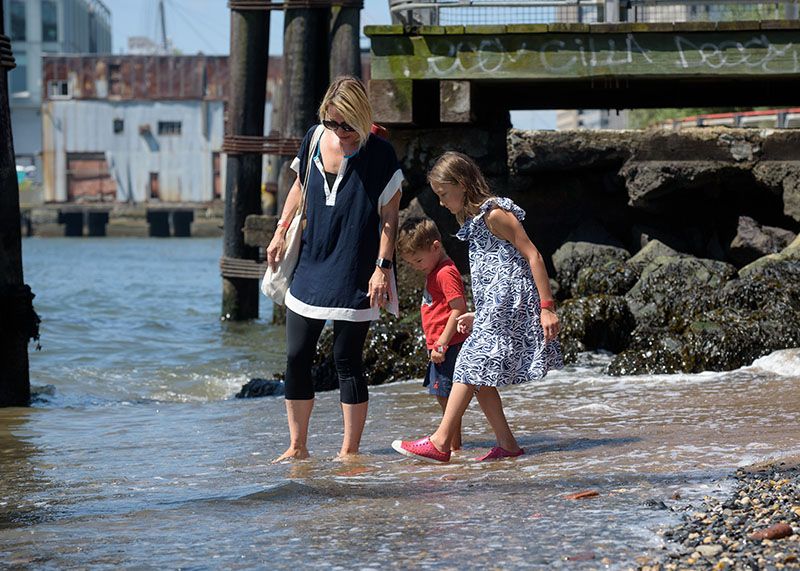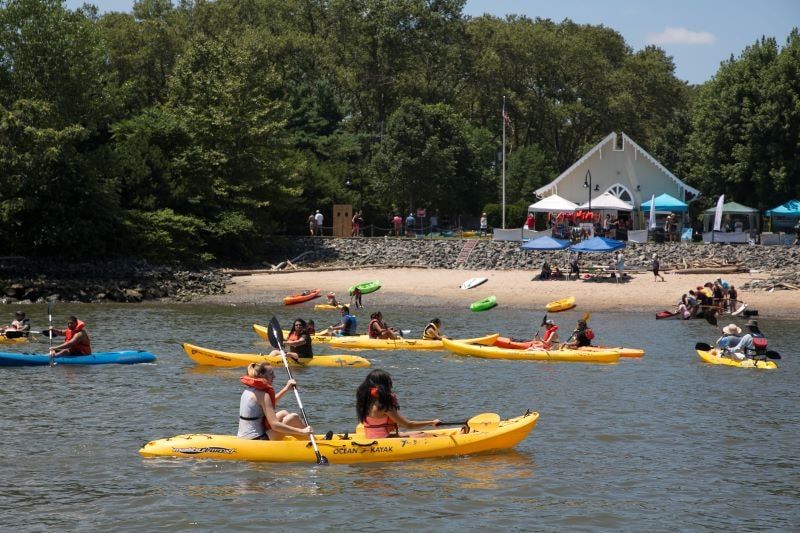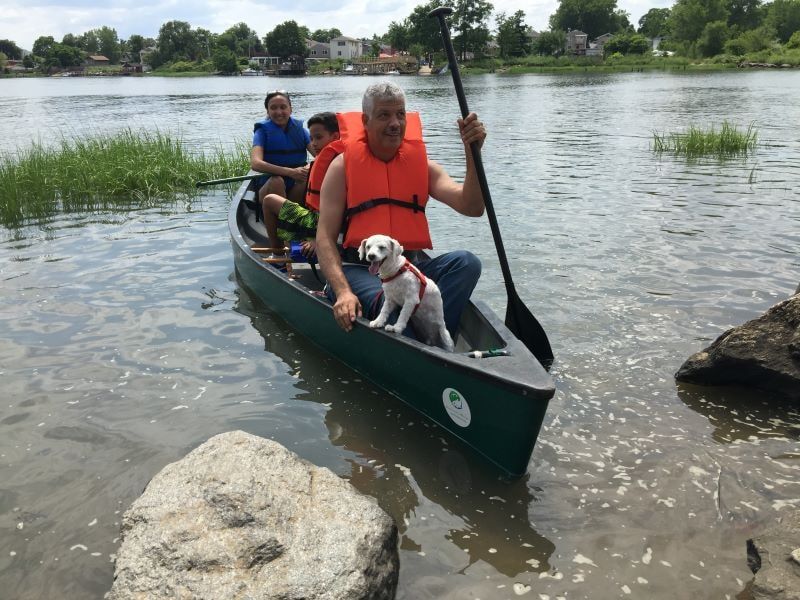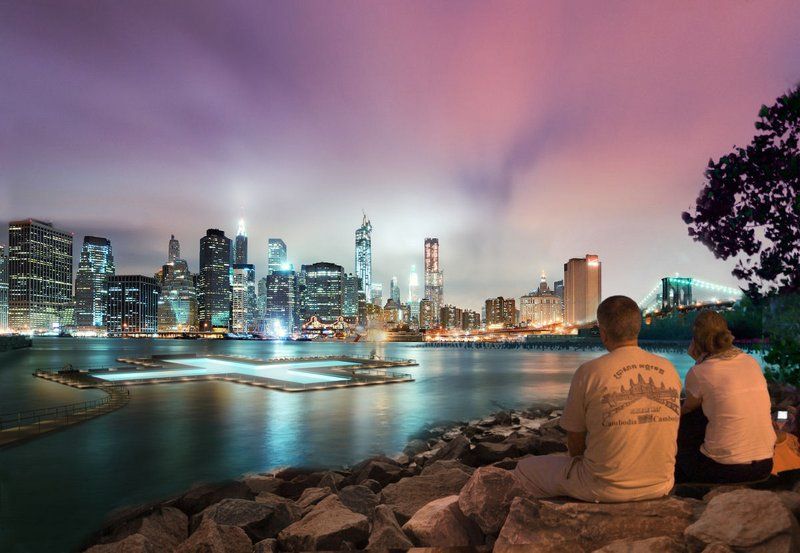Last-Minute NYC Holiday Gift Guide 🎁
We’ve created a holiday gift guide with presents for the intrepid New Yorker that should arrive just in time—


After a two-year Covid-induced hiatus, the Waterfront Alliance staged a triumphant return last week with its 2022 Waterfront Conference, a day-long conclave of planners, engineers ecologists and other enthusiasts of New York City’s rivers, harbors, beaches, ports, canals and esplanades. For the first time in recent memory, the event was held on land–at the Museum of Jewish Heritage downtown — and not on a big boat circumnavigating the island of Manhattan as in previous years. There were other noticeable changes as well. As the first conference since the murder of George Floyd and ensuing racial unrest in 2020, most of the panels and lectures centered environmental justice and equity to an unprecedented extent.
This focus was evident across the diverse range of topics covered by the panels: from the wonky (decarbonizing the maritime industry, the onshore challenge for offshore wind) to the fun (swimming and public access for the 21st-century urban waterfront). This latter topic was moderated by Untapped New York’s own Michelle Young.

The panel convened three women from varying backgrounds who all shared a passion both professional and personal: swimming in and being close to the waterfront in New York City and other challenging urban waterfront contexts. Capri Djatiasmoro is the Director of the Coney Island-Brighton Beach Open Water Swimmers (CIBBOWS). Noelle A. Thurlow is Director of Resilience Adventures, a Hoboken-based paddlesports non-profit. And Tricia Shimamura is Director of Community Affairs for the Borough President of Manhattan (which, by the way, is apparently the world’s largest island by population without a beach).

For most of them, the state of outdoor water recreation in the city leaves much to be desired, though recent years have shown signs of improvement. Thurlow recalled growing up in New York City and being told by her mother that the water “wasn’t for me” on a trip to the waterfront by the Brooklyn Bridge. Rather, the water was for boats, transportation, and heavy industry. Djatiasmoro has been swimming in the waters around the five boroughs since 2003, and has noted a significant improvement in water quality since then, in part thanks to initiatives like the Billion Oyster Project.
Of course for most of New York Harbor’s history, swimming was common–and healthy. Before Robert Moses’ enormous indoor pool and road-to-the-beach programs in the 1930s, taking a dip in one of the region’s waterways was one of the most convenient ways for city dwellers to cool off in stifling, pre-air conditioning summers, particularly for the poor and immigrant families who often lived clustered near the rapidly industrializing waterfront.

It was just this kind of environmental injustice–putting harmful emitters in poor and minority neighborhoods–that is the root cause of communities of color being hesitant to interact with the water today, according to Thurlow. Just as we learned through the pandemic that people of color are most impacted by apparently equalizing catastrophes like pandemics and climate change, rebuilding from catastrophe and building resilience will need to be practiced through an equity lens, said Shimamura.
The hard concrete edges that encircle New York City’s many islands and landmasses not only make living with rising waters more challenging, they also send a signal to would-be swimmers and other recreators that the water is not for them. Shimamura compared these boundaries to the fences around university campuses that studies have shown foment different psychological attitudes between “insiders” and “outsiders.” “Communities know their waterways best” she said, and need to be consulted for changes. She pointed to a tiny fish-cleaning station she happened upon along the Harlem River as an example of a modest but community-driven improvement.
The panelists agreed there is much low-hanging fruit the city can tackle just to make being near the water more pleasant. Most parts of the Manhattan Greenway, for example, lack basic amenities like bathrooms or drinking water, let alone wayfinding. Djatiasmoro offered a few more wish list items: showers, vessel storage and floating docks. She sees hope in the handful of kayak launches the Parks Department has built around town: “anywhere you have kayakers, you can have swimming.”

On a grander scale are project ideas like the +POOL. Way back in 2010, a group of architects and designers conceived–almost in jest–a floating pool filled with continuously filtering river water. Shaped like a big four-pronged ‘X’, the idea became known as +POOL and began fundraising on Kickstarter and generating lots of buzz. No surprise, the technical and bureaucratic hurdles for such a venture have been halting. But the team has pushed through, and just last year, got permission from the city to locate in a spot on the East River just north of the Manhattan Bridge.
After the panel, during a Q&A, an audience member led off with an emphatic one-word lament: “CSOs!”, eliciting a knowing giggle from the crowd. Combined sewage overflow, that is, and it occurs during heavy rain when the drainage systems can’t handle the sudden increase in volume, and raw sewage, normally diverted to treatment plants, is discharged directly in waterways alongside rainfall. Shimamura pointed out that it’s a 100-year-old system operating beyond capacity, and will require “everyone at all levels” (including us) to agitate for the billions of dollars needed to upgrade the infrastructure. And once again, she pointed out, it is communities of color that bear the brunt of these overflow events.
Trends are moving in the right direction. Beyond the “nature is healing” mantra that erupted during the Covid lockdown, there is more and more proof New York City’s marine life as well as landbound flora and fauna are returning in larger numbers to their natural states. Who knows- by the time +POOL finally secures enough funding and clears all remaining hurdles, it may be safe and clean enough to swim the East River unfiltered!
Next, check out the Top 10 Secrets of the Hudson River.
Subscribe to our newsletter